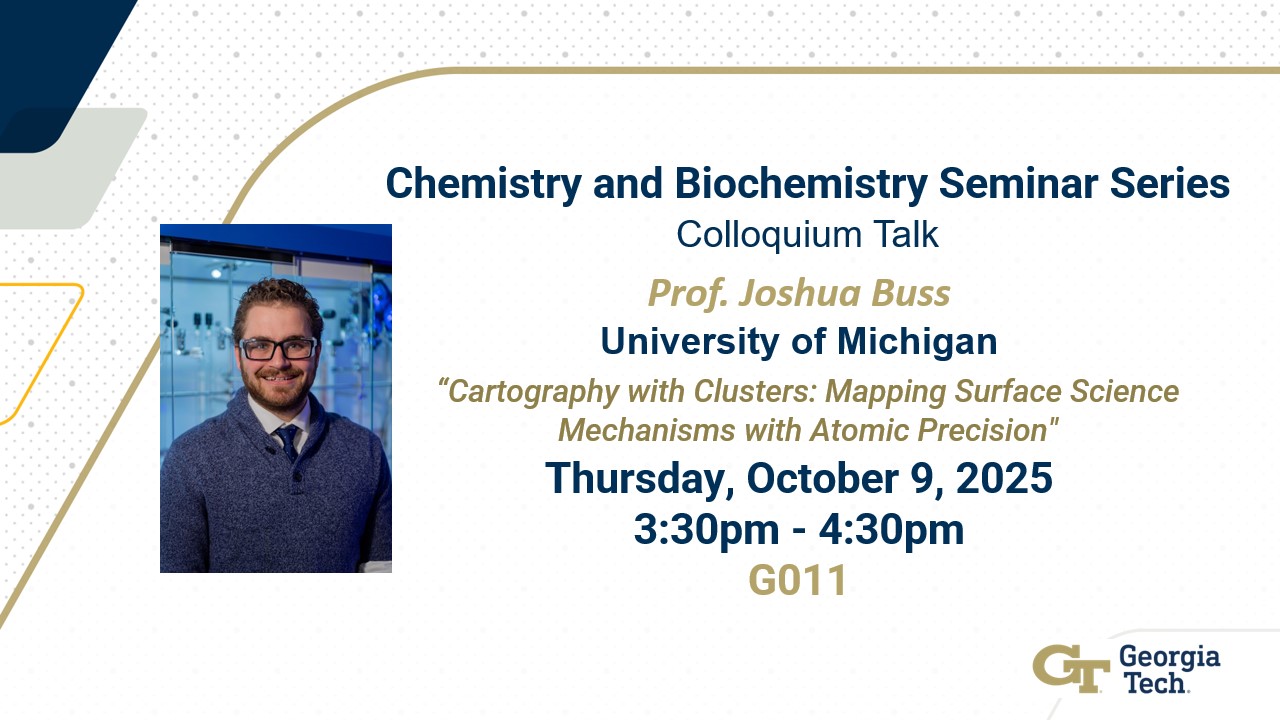
Title: Cartography with Clusters: Mapping Surface Science Mechanisms with Atomic Precision
Abstract:
The most important global chemical processes rely on multimetallic catalysts that facilitate difficult bond making and bond breaking transformations. Many of these catalysts take the form of evolutionarily optimized enzymatic machinery, while equally vital are engineered heterogeneous catalysts used in large-scale industrial chemical transformations. A significant challenge in optimizing existing catalysts and discovering or designing new ones is the lack of fundamental mechanistic understanding of the elementary chemical processes taking place at the active site. My research group addresses this knowledge gap by employing inorganic synthesis to prepare and study multimetallic complexes that adopt design features prevalent in both industrial and enzymatic catalysis. This talk will describe the synthesis of an unusual, low-valent multicopper cluster that serves as a soluble fragment of crystalline Cu(111). Studies investigating small molecule binding and activation, as they pertain to substrate adsorption and chemisorption, are presented. This platform also facilitates surface-like catalytic transformations of NOx reagents, unsaturated hydrocarbons, and carbon oxygenates. These chemistries, including insights into their respective mechanisms, will be compared to prevailing mechanistic proposals in surface science.
Bio:
Josh grew up in rural Arizona before venturing west to attend Claremont McKenna College as a Questbridge National College Match Scholar. He discovered a passion for chemistry research in the lab of Anna Wenzel, developing novel cyclization and coupling methods. He discerned his affinity for inorganic synthesis as a NSF Center for Enabling New Technologies Through Catalysis summer REU student with Mike Heinekey at the University of Washington. Josh’s undergraduate efforts garnered distinction as a Barry M. Goldwater Scholar in Mathematics, Science, and Engineering. Upon graduation, Josh ventured 20 miles west to pursue his Ph.D. at the California Institute of Technology under the mentorship of Theo Agapie. His dissertation work explored the small molecule activation reactivity of para-terphenyl diphosphine supported molybdenum complexes. His work elucidating the mechanisms of C1 oxygenate reduction and catenation was supported by an NSF GRFP and was awarded the Herbert Newby McCoy award in 2018 and the ACS Division of Inorganic Chemistry Young Investigator Award the following year. He next pursued an NIH Postdoctoral Fellowship with Shannon Stahl at the University of Wisconsin. Contrasting his metal-centric dissertation work, his postdoc efforts focused on selective C-H radical relay oxidation catalysis, for pharmaceutical core diversification and late-stage functionalization. These endeavors were supported by an F32 Ruth L. Kirschstein Postdoctoral Fellowship.
Josh began his independent career at the University of Michigan in the Fall of 2020. His research follows the common thread of studying how multiple metal centers react in synchrony to perform multielectron redox processes and activate recalcitrant small molecule substrates. His interests span fundamental structure/function studies, thermochemical benchmarking, small molecule activation, group transfer, and catalysis, employing metals from across the transition series. The long-term goal of his program is focused on elucidating the operative mechanisms of poorly understood catalytic processes in both heterogeneous and biological systems, and, in turn, developing powerful new chemical transformations in the fine chemical and energy sectors. With a synthesis-centric approach, he targets unprecedented multimetallic molecular structures capable of answering outstanding questions in inorganic/organometallic catalysis (both homo- and heterogeneous) to address challenges pertaining to both energy science and human health. This work has been recognized with an ACS PRF Doctoral New Investigator Award, the Dow Early Career Professorship in Chemistry, the Robert Kuczkowski Faculty Research Award, and, most recently, an NIH MIRA ESI award.